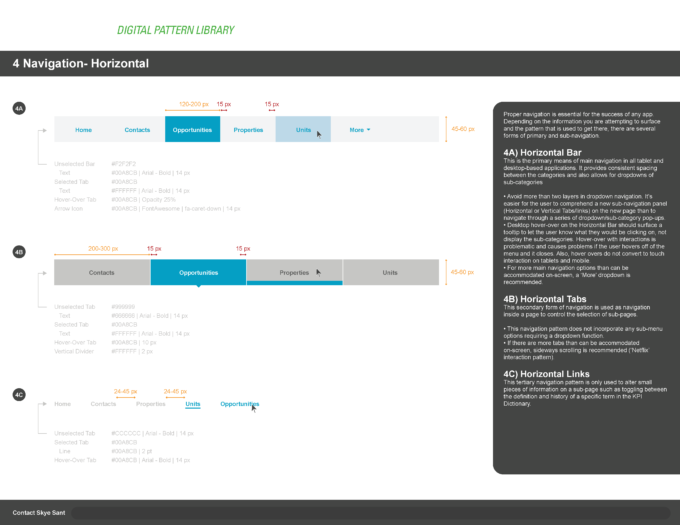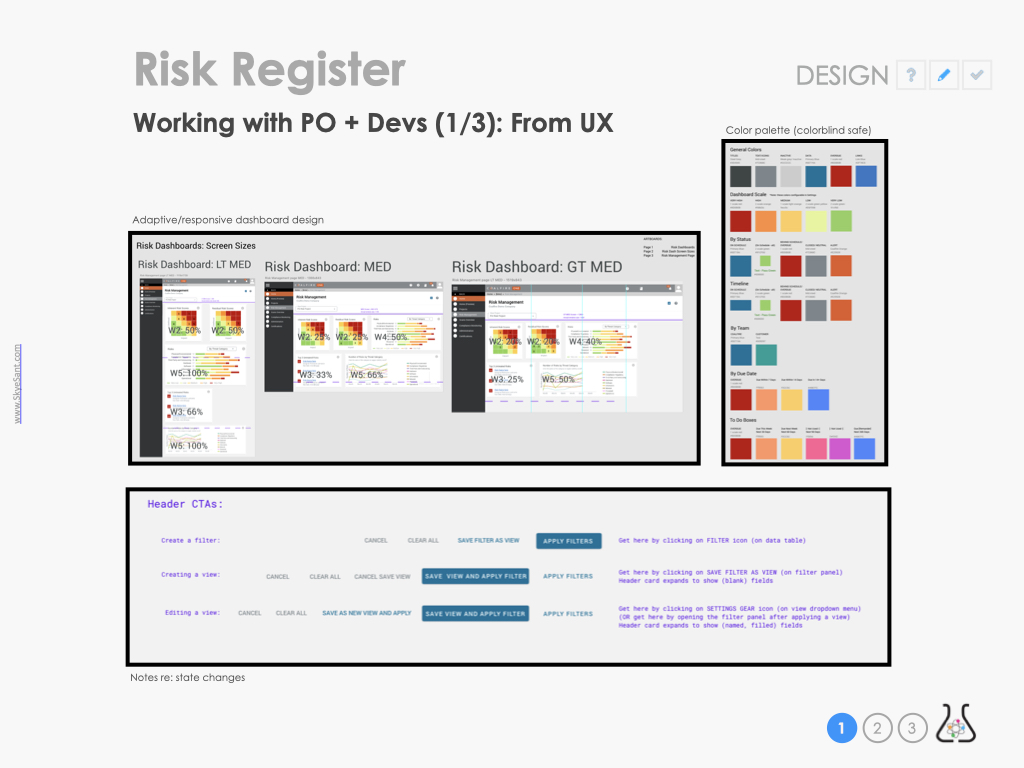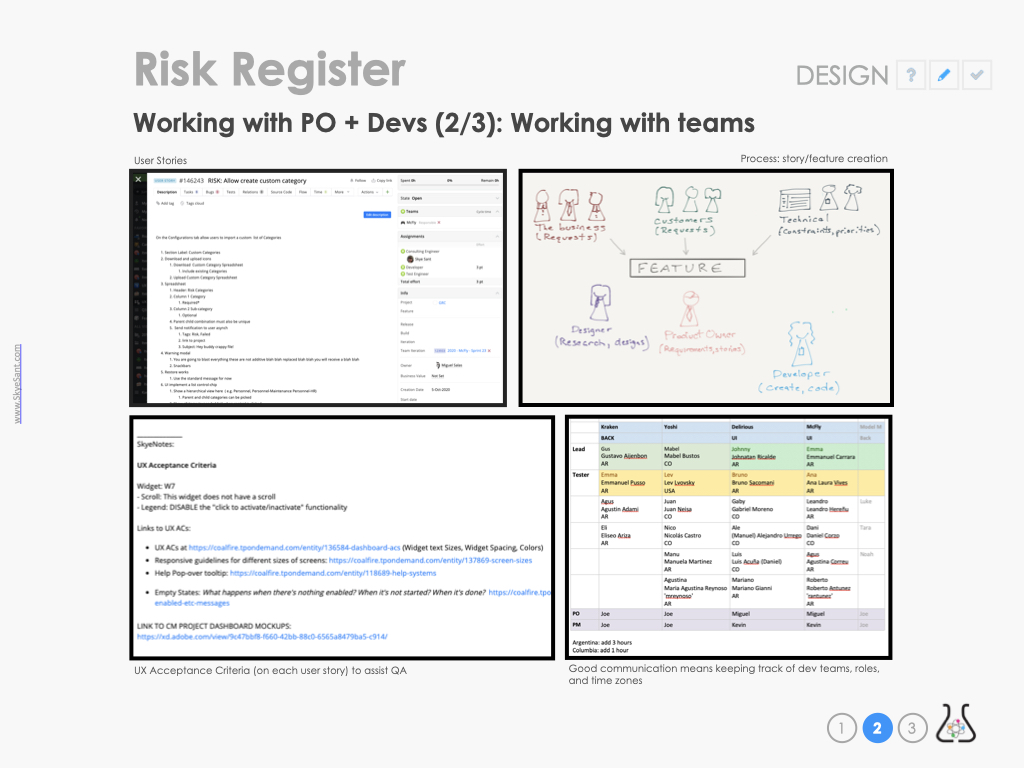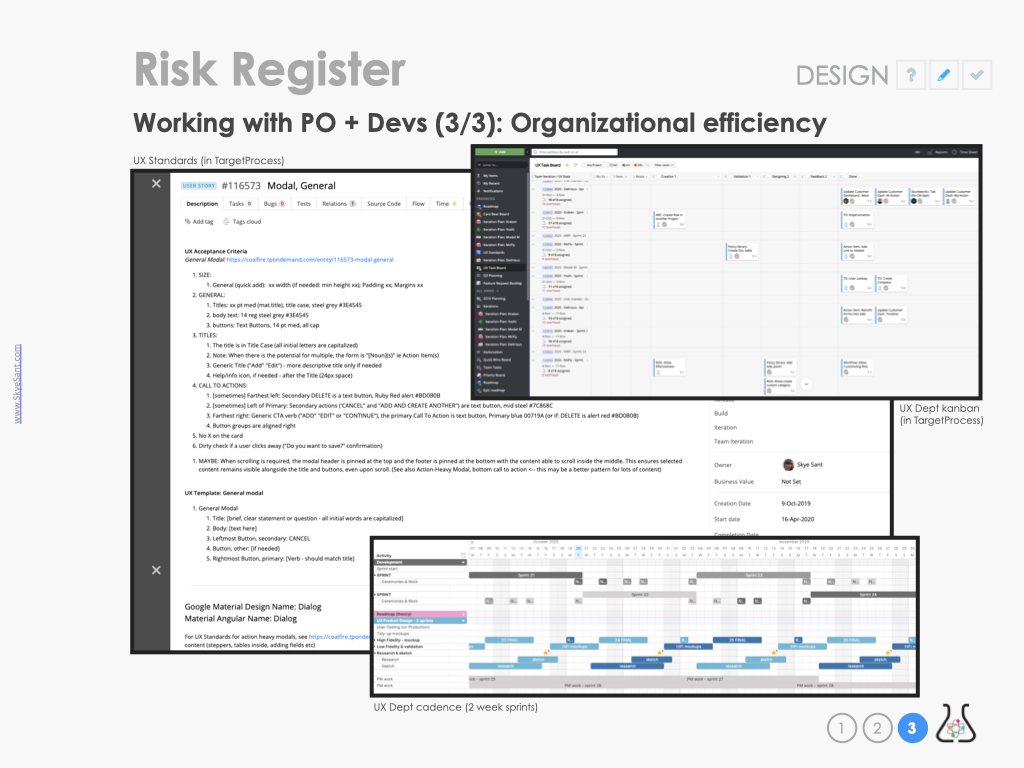
Working with Product & Engineering
Working with Product Owners (PO), Product Managers (PM) and Developers (devs) is all about operational efficiency.
At its best, agile development (little “a” agile, meaning the concept) is best done in small, flexible groups. I enjoy working as a triad – product + engineering + UX design – but however many people are involved it should be enjoyable, challenging, and flexible. Remember doing ‘group work’ in elementary school? It’s the opposite of that (ha). Each member of the team does their job well plus supports every other member of the team to excellence, picking up any jobs or roles that need to be filled and getting the work done, together.
Visit this page
TO SEE MORE
Want to see what a team and project that runs like this looks like? Visit ‘CASE STUDY: New Platform [The CDP Pipeline]’ in my Portfolio.
Want to see what a team and project that runs like this looks like? Visit ‘CASE STUDY: New Platform [The CDP Pipeline]’ in my Portfolio.
Here are some of the practices we think about as we’re designing products with our partners:
Working inside the sprint schedule

Note that this schedule accommodates sprint ‘N-4’ for Research activities – but doing work this far in advance necessitates a validity check at sprint n-1 to make sure the conditions are still relevant. Having continuous research being done outside of sprints is sometimes called ‘dual track’.
Supporting product and engineering teams

For engineers, we make sure they have the constructs and assets they need. This means all the research artifacts (personas, workflow, information architecture, etc) and tactical design assets (responsive grids, color palettes, patterns).
– Tools may include: Zeplin, Adobe Sketch, Lookback, Sketch
– Methods may include: documents, Pattern Guide/ Library, wiki, inside JIRA
Working “like they do”

Because POs, PMs, and devs work inside user stories, we do too. This makes our design work really visible to them.
I usually need to accommodate various time zones all around the world, communicating asynchronously and also specifically with different dev roles at different times.
– Tools may include: Slack etc, user story notes, (Adobe) prototype comments, phone, GTM
– Methods may include: asynchronous communication/ feedback, real-time communication
UX Department assets, processes and documents

– Organize UX work inside agile 2-week sprints.
– Create a kanban to track design work inside of the dev tool (target process) in order to manage work completely transparently.
– Create UX Standards, to be referenced by everyone, inside this same tool.
